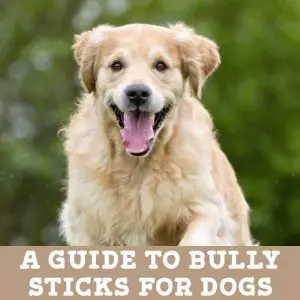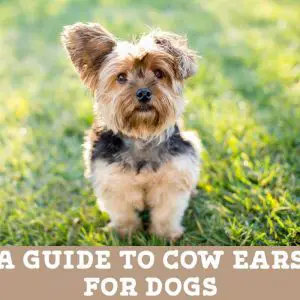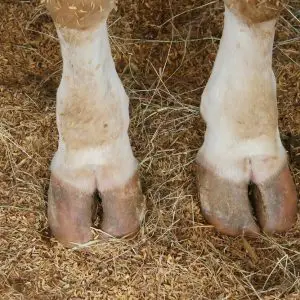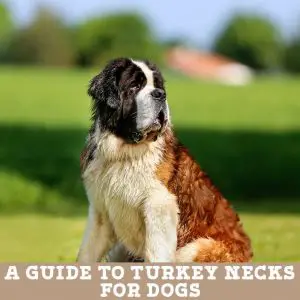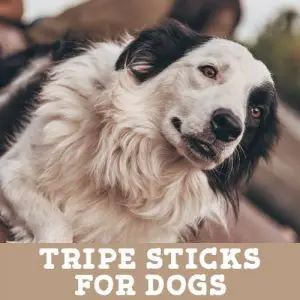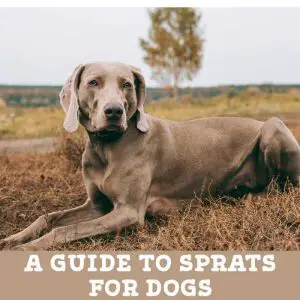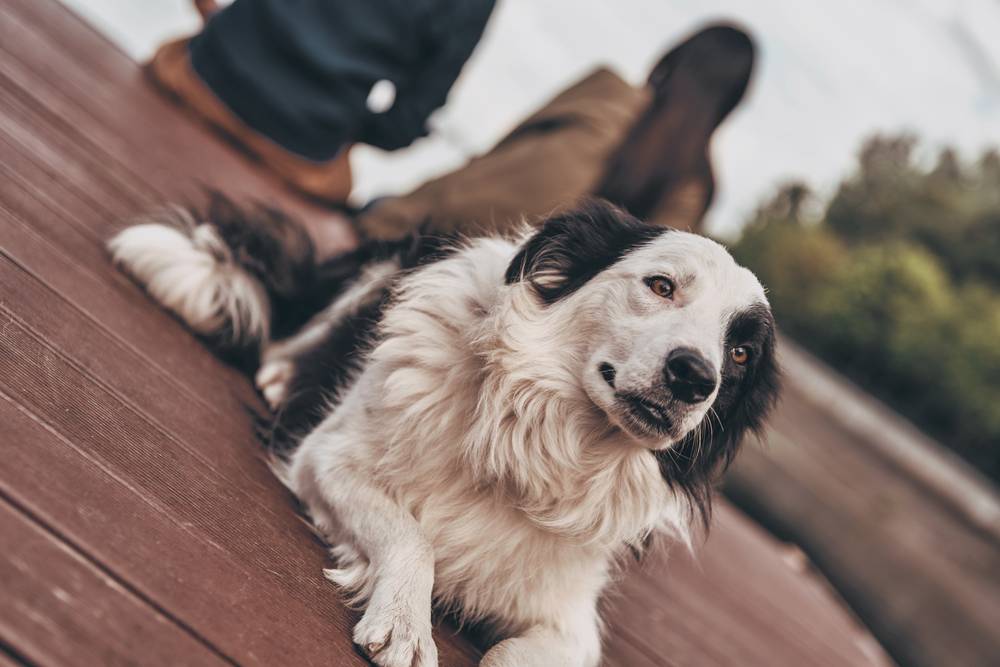
If you’re investigating long-lasting natural chews, you may have come across tripe sticks for dogs. They’re relatively inexpensive, widely sold, and enjoyed by many – but what are they? Is it true they smell? And are they any good for our dogs?
Key facts
Tripe sticks are usually made from beef stomach, air-dried from raw. They’re a highly palatable but smelly chew that lasts most dogs less than half an hour.
Tripe sticks may help to keep teeth clean, are good for mental health, and are a high-protein, low-fat treat.
Tripe sticks are high in calories and shouldn’t be given more than a couple of times a week.
Pet parents should take care to practice proper hygiene when feeding this product, as it may cause food-borne illness in people and pets.
What Are Tripe Sticks?
Provenance
Tripe is the stomach lining of several species that are part of the human food chain. Most tripe comes from beef cows, but pork, sheep, water buffalo, and goats have all been used to produce tripe. In some countries, tripe is a delicacy, but in many western civilisations the tripe would be wasted if it wasn’t used to make dog treats. So, whilst it’s a by-product of the human food chain, it’s a natural product that most dogs find delicious.
You may see tripe sticks advertised as ‘dried green tripe’. The ‘green’ refers to the colour of the raw tripe, which is stained by grass. Bleached tripe is also available, but this is usually used to make human food.
Preparation
Although fresh tripe is sometimes fed as part of a raw diet, it has a short shelf life, so tripe sticks are air-dried to preserve them. As they dry, they curl up on themselves producing a rolled ‘stick’. Tripe sticks come packed by weight and, though they vary slightly in size, most tripe sticks are dark green-brown in colour, about 6-8 inches long, and rough-textured. In some, you may be able to see the distinctive honeycomb texture of the reticulum, part of the cow’s stomach.
raw feeding tripe
watch for e-coli…
Some people feed fresh tripe to their dogs as part of raw diet. Tripe is a highly digestible source of protein with a complete essential amino acid profile, meaning it provides all the amino acids needed for a dog to survive. As with all raw meat, tripe should be handled extremely carefully if used in a raw diet, as it has been linked to severe E.coli infection and even death in humans. Pet owners feeding raw tripe should wash their hands thoroughly after handling. Tripe should be fed as part of a properly balanced diet formulated by a veterinary nutritionist.
Benefits of Tripe Sticks for Dogs
Key benefits
Cleans Teeth
Tripe sticks may help to remove plaque and tartar during chewing.
Low in Fat
May be good option for dogs that have to restrict fat intake due to pancreatitis.
Good for Mental Health
Helps to satisfy natural instinct to chew, promoting good mental health.
Cleans Teeth
One of the touted benefits of tripe sticks is that they help to clean the teeth. As with many chews, it’s possible that the abrasive action of the chew could move plaque and help to keep the teeth clean.
There are no studies looking at whether the claim for teeth cleaning is true. However, if your dog spends time chewing the tripe stick, it’s likely that there is some small benefit. However, tripe sticks shouldn’t be used instead of a proven tooth care regime.
Maintains Gut Flora
Another common claim is that tripe sticks help to maintain the gut microbiome – the normal bacteria, viruses and other microorganisms that live in your dog’s gut. There are no studies to suggest one way or another whether this is true, but I can’t see a mechanism by which this would work. Tripe is low in fibre which is usually described as being beneficial to the gut flora. And, whilst cows have an incredible microbiome, this doesn’t usually survive the drying and preserving process, and would be unlikely to be of benefit to a dog even if it did.
High Protein, Low Fat
These chews are high in protein and low in fat, making them suitable for some types of digestive upset such as pancreatitis. However, you may want to restrict the amount of extra protein you give your dog if they have kidney problems.
Highly palatable
The smelly nature of the tripe sticks means that they’re highly palatable and loved by many dogs, even picky ones!
Good for Enrichment
The chew instinct is strong in dogs, and giving them ways to express this without ruining our slippers or furniture is important. Tripe sticks, like all chews, are good enrichment for our pets. Whilst tripe sticks aren’t considered long-lasting (most last around 15-20 minutes), they are excellent for increasing enrichment with new smells, too.
Nutritional Information for Tripe Sticks
Nutrients & Compounds
Not only are tripe sticks high in protein, but they’re considered easy to digest and provide a complete amino acid profile. This, along with the fact they’re low in fat, means they could be considered a healthy addition to many dog diets. Protein is important for growth and muscle maintenance, making a high-protein snack good for growing puppies.
Active dogs such as working or sporting dogs also benefit from extra protein in their diet. However, high protein diets should be avoided in dogs with some medical conditions, including kidney disease. If your dog has a medical condition, it’s worth checking with your vet before adding tripe sticks to their diet.
Vitamins, Minerals & Compounds
Tripe could be considered a brain food, thanks to the selenium and vitamin B12 content. Both of these essential nutrients contribute to brain and nervous system health. There is some evidence that selenium and vitamin B12 can be used to help dogs with canine cognitive dysfunction (CCD or ‘doggy dementia’), but it’s unlikely that the concentrations in tripe are high enough to make a difference on their own. In addition, since CCD affects older dogs, it’s important that the effect of the extra protein on the kidneys is taken into account.
It’s best to talk to your vet before starting your senior dog on tripe sticks, and bear in mind that they’re unlikely to reduce symptoms of CCD without further supplementation.
High in Calories
Despite being fairly low in fat, these treats are high in calories due to their low inorganic matter (ash) content. A large tripe stick can have around 120 kcal, which is more than the recommended daily treat allowance for a 30lb dog.
Feeding Guide
Due to their calorific nature, tripe sticks should be fed infrequently to avoid obesity, and the right size of tripe stick should be used for your dog’s weight. Ideally, feed only once or twice a week, and remember to reduce the amount of other treats and your dog’s daily diet accordingly. Tripe sticks shouldn’t take the place of a complete and balanced diet for your dog.
Downsides & Risks of Tripe Sticks for Dogs
Beware of E-Coli
Because they are air-dried from raw, the main concern with tripe sticks is that they are contaminated with dangerous bacteria. To reduce the risk, treat tripe sticks as you would raw chicken – wash hands and areas in contact with the chew thoroughly, and don’t let your dog lick your face.
Salmonella, E.coli and other Bacteria
As most tripe sticks are air dried from raw, there is a risk that bacteria can survive on the surface. Whilst food poisoning is a risk to your dog, especially if they are ill or immunocompromised, this bacterial contamination is also a risk to people the dog comes into contact with.
Even if a dog shows no signs of food bacteria poisoning, they can still pass it on to their human family, especially the very young and very old. At least one person has died from severe E. coli after contact with raw tripe. To reduce these risks, you should wash your hands thoroughly after handling tripe sticks or touching your dog, especially before eating.
If you have young, elderly, or ill people in the house, you may want to avoid air-dried tripe sticks and look for other treat options or cooked tripe.
Choking and Mouth Injury
As with all chews, there is a risk of choking with dogs fed tripe sticks. Although they quickly soften in contact with moisture, tripe sticks are initially hard and can cause gum injury and trauma to the inside of the mouth. Pieces of stick can also ‘go down the wrong way’ and cause choking. It’s best to supervise dogs when they are having any treat to reduce these risks.
Avoid If…
- Your dog has known sensitivity to beef, as most tripe sticks are made from beef. Instead, you may be able to find tripe sticks made from bison or other animal sources.
- Your dog is obese, as tripe sticks are high in calories. Obese dogs should be on a calorie-restricted diet and on a veterinary-led weight-loss plan.
Tripe Sticks for Puppies

Most tripe stick manufacturers list them as safe for puppies from 8-12 weeks. However, tripe sticks are very calorific so you should take care that you aren’t unbalancing your puppy’s meal by giving them tripe sticks. Try to find small tripe sticks (or cut/break them in half) and feed them less often than you would for an adult – a fortnightly treat is plenty! Additionally, try to find cooked or heat-dried tripe sticks for younger dogs, as their immune systems may not be up to coping with food-borne illnesses.
Alternatives to Tripe Sticks
- Beef tendons: Like tripe sticks, beef tendons are good for dental care and mental health. However, they last a bit longer – so might be a good way for you to entertain your dog for longer – and are lower in calories.
- Dental chews: If the smell of tripe sticks puts you off, consider whether a VOHC-approved dental chew could give your dog the same chewing satisfaction and dental benefits without the stink. Another bonus is that these products tend to be cooked and are less likely to carry disease-causing bacteria.
- Bully sticks: Also made from beef and good for dental care, bully sticks are a good alternative to tripe for dogs needing extra chewing time. However, they suffer with the same bacterial contamination risks as tripe sticks.
FAQs
Tripe sticks could be considered good for dogs due to their possible dental benefits. However, they are also high in calories and shouldn’t be given often.
Tripe sticks are generally considered safe for dogs, but being a raw product do carry the risk of bacterial contamination. Like all chews, tripe sticks are also a choking hazard.
Most dogs seem to like tripe sticks. However, some dogs don’t enjoy the flavor and tend to hide or bury their tripe sticks instead.
Tripe sticks are very high in calories, so a dog should only have one tripe stick a day. Ideally, you shouldn’t give tripe sticks more than twice a week to avoid obesity.
In my experience, tripe sticks tend to last most dogs 10-15 minutes of continuous chewing. Once they become moistened by saliva, tripe quickly softens and most dogs eat tripe sticks quite quickly.
Whilst anything has the potential to cause a blockage if swallowed in large amounts, tripe sticks are fully digestible so have a low risk of blockage, especially if your dog chews them properly.
Tripe sticks can be unpleasant to have in the house as they’re very smelly. Store them in an airtight container and away from the kitchen to reduce the impact.
Like all new foods, tripe sticks can cause diarrhoea in dogs that are not used to them. Dogs may also be allergic to beef protein, which can cause diarrhoea if fed.
Tripe sticks are made from the stomach of animals in the human and pet meat industry. Most tripe sticks come from beef. Since humans tend not to eat tripe (although they can!), tripe sticks are harvested by washing the stomach and then air-drying into treats for dogs.



